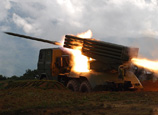
Even so, the both sides still face many practical difficulties and challenges in the development of bilateral relations. Some media, political parties and military sources of India often made discordant voices on issues of borders and cross-border water resources, interfering with the normal development of bilateral relations. Some Western countries do not hope to see the rapid rise of China and India, so they deliberately spread such negative news as "China-India competition theory," "China threat theory" and "competition between the dragon and the elephant," in an attempt to provoke contradictory and delay the development of the two countries.
With long-term exchanges, both Chinese and Indian government and people have recognized that only dialogue, cooperation, peaceful coexistence, common development are the correct choice of both sides. Currently, the two countries shoulder the important tasks of developing economy, improving people's livelihood and promoting regional peace and development, so both of them need a peaceful and stable external environment.
As the representatives of emerging powers and important members of G20 and BRICS countries, China and India have extensive common interests in the major fields including the reform of international system, the global economic governance, energy resources and climatic change, so they have great potential of cooperation and broad prospects.
A U.S. think tank has recently issued a report, saying that the rise of China and India will shake the global order. With eastward shift of U.S. strategic focus, the United States will have a complicated relationship with China and India. It deserves special attention and tests the wisdom of all parties that how China and India can go beyond the "competition between the dragon and the elephant" and how China, India and the United States can seek a balance.
Read the Chinese version: 中印关系需要新思维; ; Source: People's Daily Overseas Edition; Author:Mu Yongpeng

















 'Sister House' case urges efforts in combating corruption in affordable housing
'Sister House' case urges efforts in combating corruption in affordable housing


![]()
